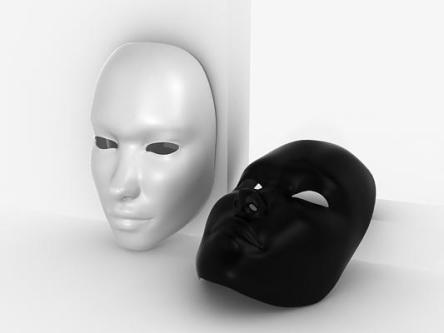AUTHENTIC LEADERSHIP AND THE PURSUIT OF INCLUSION
by cntchuck
A few weeks ago I found myself saying with a very heavy heart that “I have to be a totally different person at work in order to get on”. I was delivering a presentation on Values & Behaviours at the time to a talented group of students from the Greenwich School of Management. Most of them were from a BAME (black and asian minority ethnic) background and studying for a degree in Oil & Gas Management. At that point in the presentation I asked the students to pause for a moment and imagine if they could, what it would be like for them to turn up to work, day after day, feeling this way. The students of course responded with a great deal of empathy towards what I had said.

Being Someone Else
However you should know that these were not in fact my own words. These were the words of a colleague speaking in 2006, at a workshop designed to gather data on the experiences and perceptions of ethnic minority employees, working at the time in my company. These words in particular belonged to someone who had experienced a negative reaction from colleagues to their ethnicity; to the way they walked, to the way they talked and even to the way they laughed. This person could see no BAME role models within the company and ultimately decided that if they wanted to reach the top, they would need to be someone else entirely.
Being Yourself
I found this truly saddening at the time and even more so today among all the talk of authentic leadership, what it means and why it’s important. In my view authenticity is all about believing in a consistent set of values that define who you are. It’s about building a framework of behaviours in support of those values and about being true to your self and genuine with others. In her book 7 Traits of Highly Successful Women on Boards, Dr Yvonne Thompson touches on the importance of authenticity in a series of interviews with a number of female executives who sit on corporate boards in the UK. There is a clear and consistent message coming from the most senior of female leaders who say that people need to see you for who you are. One of these leaders was coached by a partner in her firm not to change at all, because she was already exactly what they wanted. Another goes on to say with absolute conviction that if you pretend to be something you’re not, you will fail.
Being Open & Honest
I’ve heard some argue further that authenticity means sharing your whole self with your colleagues, being open and honest about everything and anything. However I don’t buy this, there are some obvious risks in behaving this way especially if you don’t work in a culture where there is complete trust among your colleagues. In fact what I would say is that the working environment needs to be an inclusive one in the first place before someone can fully express their authenticity.
In my company today, the environment for BAME employees has certainly improved since 2006. The evidence is there on our corporate social networking site Yammer (an internal version of Facebook) where the group in support of our ethnic minority community has registered more than 700 members. It seems that we’ve reached a point where ethnic minorities like me can openly celebrate our cultural differences in a more inclusive environment than before. The situation is the same for women, but unfortunately not so for our LGBT (lesbian, gay, bisexual and transgender) community, whose group has fewer than 70 openly supportive members. There are still clearly a significant number of LGBT employees who dare not bring their whole selves to work, in the same way my colleague who was a BAME employee, decided to be someone else entirely in 2006. However I do think there is a subtle difference in approach between the two when it comes to authenticity.
Being Creative
Dr Nina Burrowes, author of The Little Book on Authenticity reminds us that the Latin root of the word “authentic” is “author”, which suggests there may be an element of invention and creativity in defining who you are. This is something I’m comfortable with because it doesn’t suggest adopting an entirely separate identity for work, but rather adapting and evolving as you grow with experience. I believe and hope that what we see in my company is that the LGBT community is in a place where they can be truly authentic with those colleagues who work most closely with them, whilst being more cautious with others in the wider working environment as a form of protection.
This would be a step forward but not ideal and as such the pursuit of a fully inclusive working environment is even more urgent than before. Especially if we want to develop the authentic leaders of the future drawing from as wide a pool of talent as possible, that includes our LGBT community alongside women, ethnic minorities and others.
Follow @ctdiversity
Very insightful read.